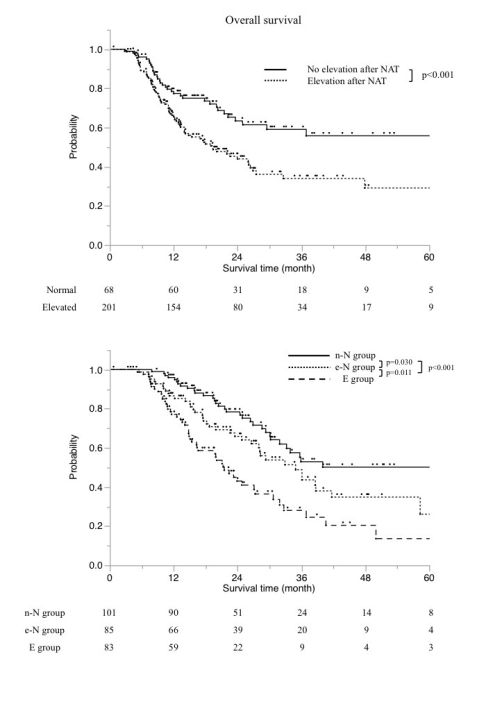|
|
Back to 2015 Annual Meeting Program Serum Carbohydrate Antigen 19-9 Values After Neoadjuvant Therapy Predict Survival of Patients With Pancreatic Adenocarcinoma: a Multicenter Case-Control Study of 269 Patients Shuichi Aoki*1, Fuyuhiko Motoi1, Yoshiaki Murakami2, Masayuki Sho3, Sohei Satoi4, Goro Honda5, Hiroki Yamaue6, Ippei Matsumoto7, Michiaki Unno1 1Department of Surgery, Tohoku University Graduate School of Medicine, Sendai-city, Japan; 2Department of Surgery, Institute of Biomedical and Health Sciences, Hiroshima University, Hiroshima, Japan; 3Department of Surgery, Nara Medical University, Nara, Japan; 4Department of Surgery, Kansai Medical University, Osaka, Japan; 5Department of Surgery, Tokyo Metropolitan Cancer and Infectious diseases Center Komagome Hospital, Tokyo, Japan; 6Second Department of Surgery, Wakayama Medical University, Wakayama, Japan; 7Division of Hepato-Biliary-Pancreatic Surgery, Kobe University Graduate School of Medicine, Kobe, Japan
Background: Serum carbohydrate antigen (CA) 19-9 values after resection are considered to predict prognosis in patients with pancreatic adenocarcinoma (PA); however, the significance of normal CA19-9 values after neoadjuvant therapy (NAT) has not been clarified. Objective: This study aimed to define the prognostic significance of normal CA 19-9 values after NAT in patients with PA. Methods: A total of 269 consecutive PA patients who underwent resection after NAT between 2001 and 2012 were retrospectively reviewed using the common database of 7 high-volume institutions in Japan. According to perioperative CA19-9 alterations, the patients were divided into 3 groups: the n-N group (no elevation after both treatments), e-N group (elevation after NAT but no elevation after surgery), and E group (elevation after surgery). Analyses of overall survival (OS) and recurrence patterns were performed. Results: Normal CA19-9 values after NAT were significantly associated with normal CA19-9 values after resection (P < 0.001). The n-N group exhibited a better prognosis (5-year OS: 50.1%) compared with the e-N and E groups (26.1% and 13.6%; P = 0.030 and <0.001, respectively). Receiver operating characteristic curve analysis demonstrated that 103 U/ml was the optimal pre-treatment CA19-9 cut-off value defined as no elevation after NAT and multivariate analysis revealed that pre-treatment CA19-9 value < 103 U/ml (P = 0.021), tumor resectability (P = 0.031), nodal stage (P = 0.002), and residual status (P = 0.049) were significant predictors of OS. Moreover, the n-N group showed a lower risk of primary hepatic recurrence (17.8%) compared with the e-N group (29.4%; P = 0.062) and the E group (32.5%; P = 0.021). With regard to loco-regional and peritoneal recurrence, there were no apparent differences among the n-N, e-N, and E groups. Conclusions: Patients with no elevation of CA19-9 values after NAT were more likely to exhibit no elevation of CA19-9 values after surgery and to have an excellent prognosis, with low incidence of primary hepatic recurrence after surgery. Pre-treatment CA19-9 values < 103 U/mL is an independent predictor of improved survival. Back to 2015 Annual Meeting Program |
|||||||||
© 2025 Society for Surgery of the Alimentary Tract. All Rights Reserved. Read the Privacy Policy.


